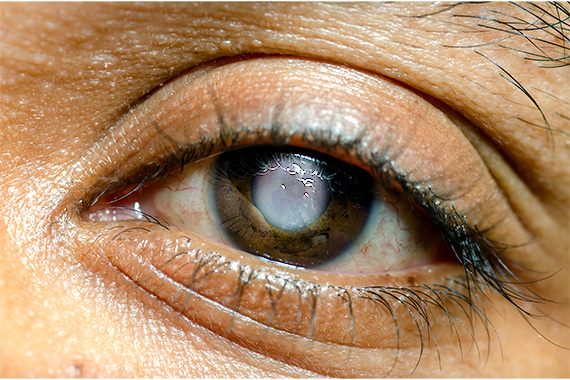Glaucoma is an eye condition that damages the optic nerve, which is caused by excessive high pressure in the eye. It is one of the major causes of blindness, but early diagnosis and glaucoma treatment can prevent serious vision loss. At Shree Ramkrishna Netralaya, we provide comprehensive Glaucoma treatment for adults, using the latest diagnostic technologies and treatment options to effectively manage this disease. Our team of professionals is dedicated to preserving your vision and maintaining the health of your eyes.

Book Appointment Download Brochure
For diagnosing Glaucoma, a detailed eye exam that includes a series of specialized tests and evaluations is required. Our ophthalmologists perform thorough examinations, including measuring intraocular pressure (tonometry), examining the optic nerve, and looking for retinal defects. These tests help in the early detection of glaucoma, allowing quick and effective treatment to prevent further damage to vision.
At Shree Ramkrishna Netralaya, we use modern diagnostic tools to ensure accurate diagnosis. Our dedicated team carefully evaluates each patient's condition to develop a treatment plan that will best meet their needs.
Some of the advanced diagnostic technologies we use at Shree Ramkrishna Netralaya for Glaucoma diagnosis are mentioned below
A non-invasive imaging test that provides a detailed picture of the retina and optic nerve, helps detect early signs of glaucoma.
Examines peripheral vision to detect any loss of vision, which is a common symptom of glaucoma.
Measures corneal thickness, which can affect eye pressure readings and glaucoma risk assessment.
Examines the drainage angle of the eye, which is important for diagnosing the type of Glaucoma.
Measures the pressure inside the eye, which is the main factor in the development of Glaucoma.
At Shree Ramkrishna Netralaya, we offer a variety of treatment options based on the type and severity of glaucoma. Initially, most patients are treated with medications to lower intraocular pressure and reduce the impact on the optic nerve. In more advanced cases, surgical interventions are considered.
A promising non-invasive treatment option, SLT laser is used to improve fluid drainage in the eye, effectively reducing intraocular pressure. It is often recommended for patients who are not responding well to medications or as an initial treatment to delay the need for surgery.
This involves the implantation of a small valve that helps drain excess fluid from the eye, reducing intraocular pressure.
A minimally invasive procedure where a tiny stent is inserted into the eye to improve drainage, best suited for patients with early to moderate glaucoma.
A traditional glaucoma surgery that creates a new drainage pathway to lower eye pressure, typically used in advanced glaucoma cases.
The successful Glaucoma therapy can be ensured by following these preparation tips
After glaucoma treatment, patients can expect a recovery period that varies depending on the type of procedure performed. At this point, it is important to follow the post-glaucoma operation care instructions provided by your doctor
You may experience discomfort or blurred vision at first, which usually disappears within a few days. Regular follow-up visits will be scheduled to monitor your progress and adjust medication if necessary. It's important to avoid strenuous activity, wear protective eyewear, and use prescription eye medications.
All glaucoma treatment options are generally safe but can also lead to some serious complications, such as:
Some patients may suffer from allergic reactions to drugs or anesthesia used during treatment.
Blurred vision or the eye may become sensitive to light after glaucoma operation but it is usually temporary and goes away with time.
Mild to moderate eye pain is a common side effect of glaucoma operation and can be relieved by the use of prescribed pain relief.
As with any surgical procedure, there is a risk of infection, which is minimized with the help of proper post-operative care.
The long-term success of certain surgeries can be affected due to scar tissue formation and may require further treatment.
Shree Ramkrishna Netralaya remains at the forefront of glaucoma treatment by incorporating new innovations and advanced techniques such as:
A non-invasive laser procedure that helps reduce intraocular pressure by increasing the flow of fluid drainage into the eye.
Advanced imaging technology that enables imaging and monitoring of the optic nerve and retina, allowing early detection of changes
Personalized treatment plans based on genetic testing and patient-specific factors to achieve optimal results.
Our team at Shree Ramkrishna Netralaya includes experienced glaucoma surgeons and specialists who are experts in Glaucoma treatment:
Shree Ramkrishna Netralaya in Thane is the best choice for comprehensive, advanced and effective glaucoma treatment. With our team of experts, cutting-edge technology and patient-focused approach, we are committed to preserving your vision and improving your quality of life. Schedule a consultation today to take the first step toward better eye health.
Glaucoma is often caused by increased pressure in the eye due to poor aqueous humor drainage, which can damage the optic nerve.
Early-stage glaucoma often has no symptoms. As the disease progresses, symptoms may include blurred vision, eye pain, and loss of vision.
Depending on the severity of the condition, treatment options may include medications, laser therapy, and surgery.
While Shree Ramkrishna Netralaya is your top choice for eye care in Mumbai, you may also consider our other reputable clinics and hospitals near you.
Address:
201 & 202 Elmer #Plot #563, Central Avenue, Corner of, 11th Rd, Chembur, 400071
Phone: 082917 14838
Timing: Mon-Sat- 10 a.m. To 8 p.m.
Address:
Near Risk Care Hospital, Near Makhamali Talao, LBS Marg, Thane, W, Mumbai, Maharashtra 400601
Phone: 02225441139
Timing: Mon-Sat- 11 a.m. To 8 p.m.